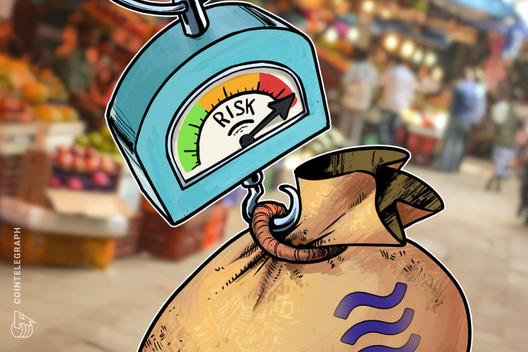Which stablecoins were actually ‘stable’ during this week’s sudden Bitcoin price crash?
A sharp sell-off across the cryptocurrency market Tuesday—that saw top tokens like Bitcoin (BTC), Ether (ETH), Cardano (ADA), and Solana (SOL) fall by double-digital percentages—created a venue for stablecoins to prove their worth.
The fixed-price cryptocurrencies offered interim protection to traders from the notorious crypto price volatility. They did so by almost maintaining their one dollar-peg and offering sufficient liquidity to traders that looked for a safety net during the market decline.
Blockchain analytics service CryptoQuant reported dramatic spikes in the stablecoin transfers as the cryptocurrency market cap fell from $2.38 trillion to $2.103 trillion on Tuesday.
For instance, Tether, the leading stablecoin by volume, processed $10.51 billion worth of transactions on Tuesday compared to $4.02 billion on Monday.

Similarly, the second-largest stablecoin USDC, backed by Circle, reported $5.728 billion worth of transfers on Tuesday versus $3.27 billion in the previous session, logging a 74% spike.
At the same time, the net stablecoin supply in circulation remained relatively idle, around $67 billion, showcasing adequate liquidity against demand even in the face of a brutal crypto market decline. As a result, many top stablecoins maintained their 1:1 dollar peg despite logging minor price drifts.
Centralized stablecoin more dependable
Among the top-10 stablecoins that showed minimal average deviation from their one dollar peg included six centralized, two mixed, and two algorithmic projects.
USDC demand pushed its average valuation by about $0.00196 above a dollar, closely followed by Paxos (PAX), which traded $0.00203 above the same peg.

Similarly, Binance exchange’s native stablecoin BUSD and MakerDAO’s DAI maintain their stability via a dynamic system of Collateralized Debt Positions (CDPs), autonomous feedback mechanisms, and a variety of user incentive structures, was up $0.00244 from its dollar peg.
Tether’s wider demand across the cryptocurrency spectrum also pushed its average deviation up by $0.00244.
Related: Tether promises an audit in ‘months’ as Paxos claims USDT is not a real stablecoin
Meanwhile, TrustToken’s TUSD, Stable Universal’s HUSD, and Terra’s UST drifted $0.00249-0.00385 from their dollar valuation. FRAX and FEI posted decoupled from their dollar peg by jumping $0.00404 and $0.00474 above it, respectively.
The data snapshot was taken 24 hours after the Sept. 7 crypto market crash.
Stablecoin collapse good for Bitcoin?
But potential stablecoin risks have also attracted the attention of top U.S. officials, including Treasury Secretary Janet Yellen and Boston’s Federal Reserve’s President Eric Rosengren.
In July, Yellen “underscored the need to act quickly to ensure there is an appropriate U.S. regulatory framework in place,” in a meeting with the heads of the Federal Reserve, the Securities and Exchange Commission, the Commodity Futures Trading Commission, the Office of the Comptroller of the Currency and the Federal Deposit Insurance Corporation.
Related: Stablecoin growth could affect credit markets, rating agency warns
Meanwhile, Rosengren called Tether a potential challenge to financial stability.
In July, a paper released by Fitch Ratings also noted that collateralized stablecoins could trigger short-term credit market contagion. Excerpts:
“A sudden mass redemption of [tether] could affect the stability of short-term credit markets […] particularly if associated with wider redemptions of other stablecoins that hold reserves in similar assets.”
But what does a stablecoin market collapse could mean for Bitcoin and similar digital assets? Mike McGlone, the senior commodity strategist at Bloomberg Intelligence, said it would benefit Bitcoin, in particular.
“If the whole market collapse, there is only one safe store of value left: Bitcoin.”
For more about the potential risk of stablecoins, check out Cointelegraph’s latest video report.
The views and opinions expressed here are solely those of the author and do not necessarily reflect the views of Cointelegraph.com. Every investment and trading move involves risk, you should conduct your own research when making a decision.









